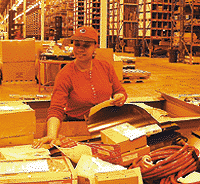Daniel L. Whitten
| Staff ReporterGoing Online for Parts: What Happens to OEMs and Dealers?
The relationship between the parts distribution systems of the original equipment manufacturers and the online parts exchanges that are starting to populate the World Wide Web is like that of an elephant to a mouse: The mouse is quick and can fit into small places, while the elephant is big and powerful but in some ways fears the mouse.
The mice of the truck parts industry are finding niches to sell used and specialty merchandise over the Internet and through independent parts distributors. However, they don’t particularly want to cross the path of the industry’s elephants. OEMs have well-established networks and are very protective of them — not only of their relationships with dealers, but also of the dealers’ relationships with their customers.
Each year, trucking buys $10.7 billion worth of components and replacement parts. Carriers spend more than $4 billion with dealers and about $3.2 billion with warehouse distributors. The remaining purchases are spread among independent garages, auto warehouses and engine distributors. Trucking fleets buy 40% of all aftermarket parts directly from the dealer, according to FleetScape.com, an online parts venture.
For the full story, see the May 22 print edition of Transport Topics. Subscribe today.
 |  Michael James - Transport Topics |
 | A worker prepared shipments containing truck components at the Freightliner parts distribution center in Memphis, Tenn. |
The purveyors of online parts exchanges say the Internet makes it possible to cut procurement costs and equipment down time. OEMs and the online exchanges are essentially in a race to automate their distribution networks and consequently save buyers money.
 |

